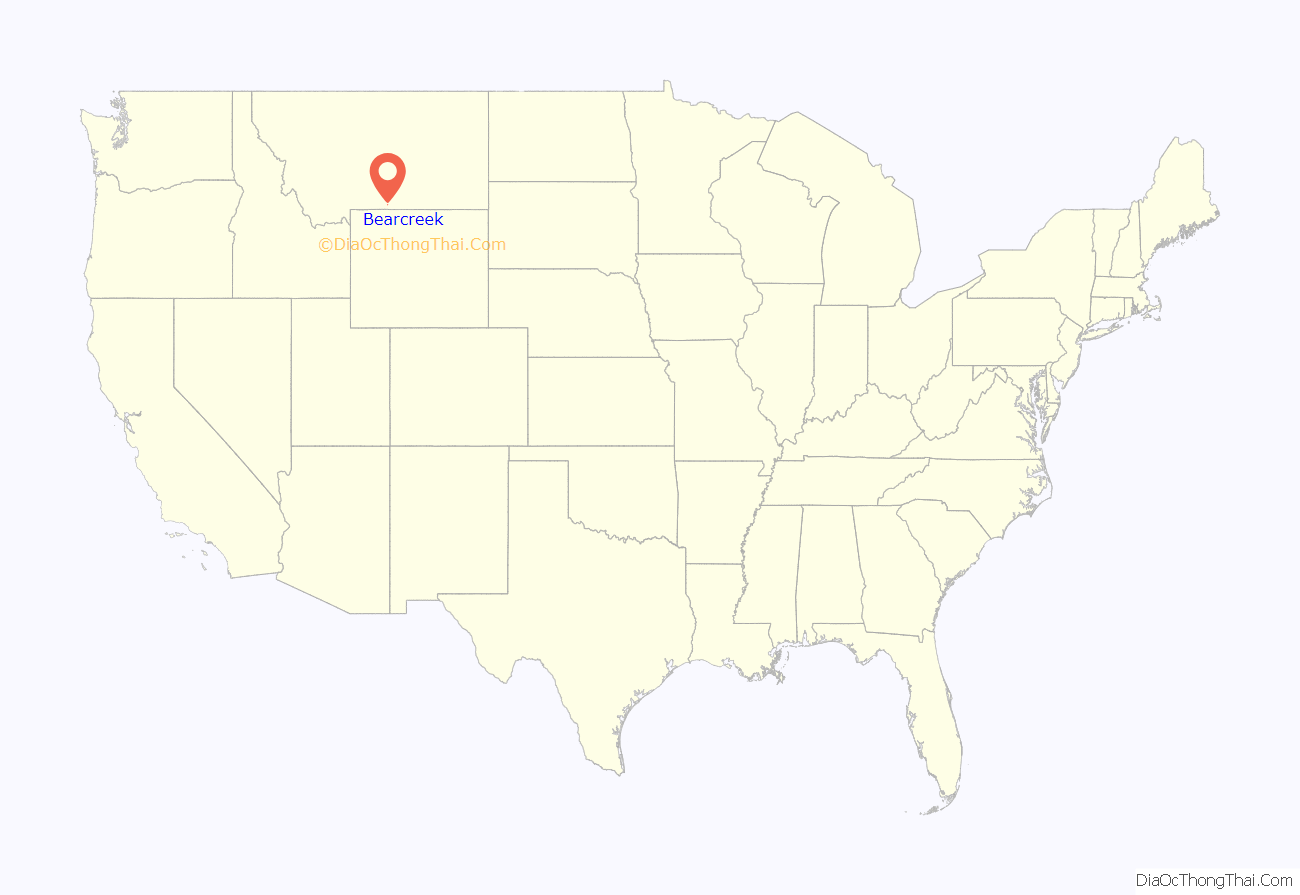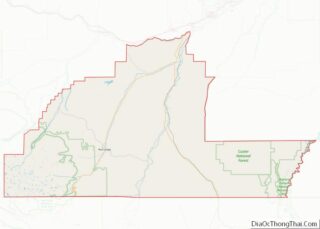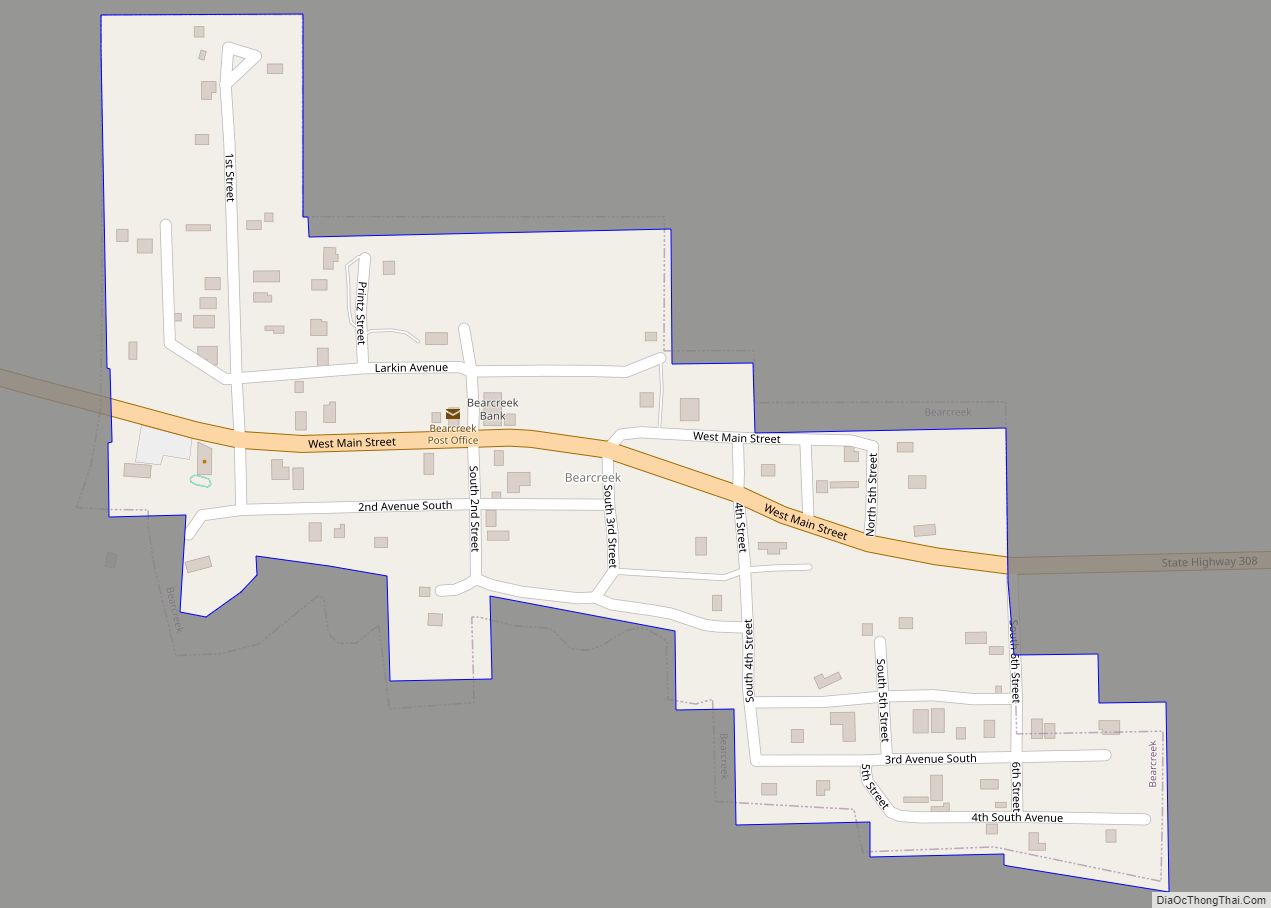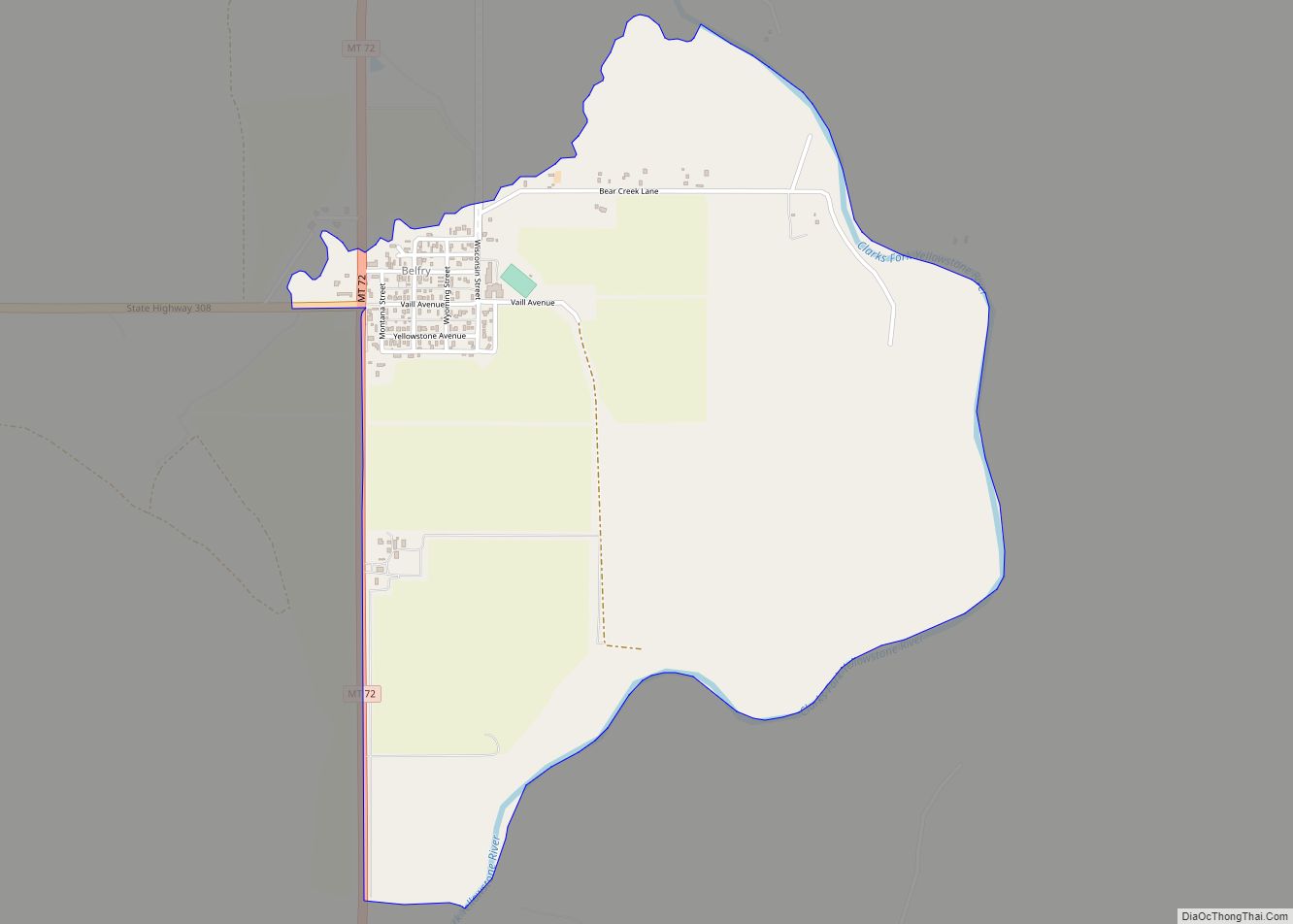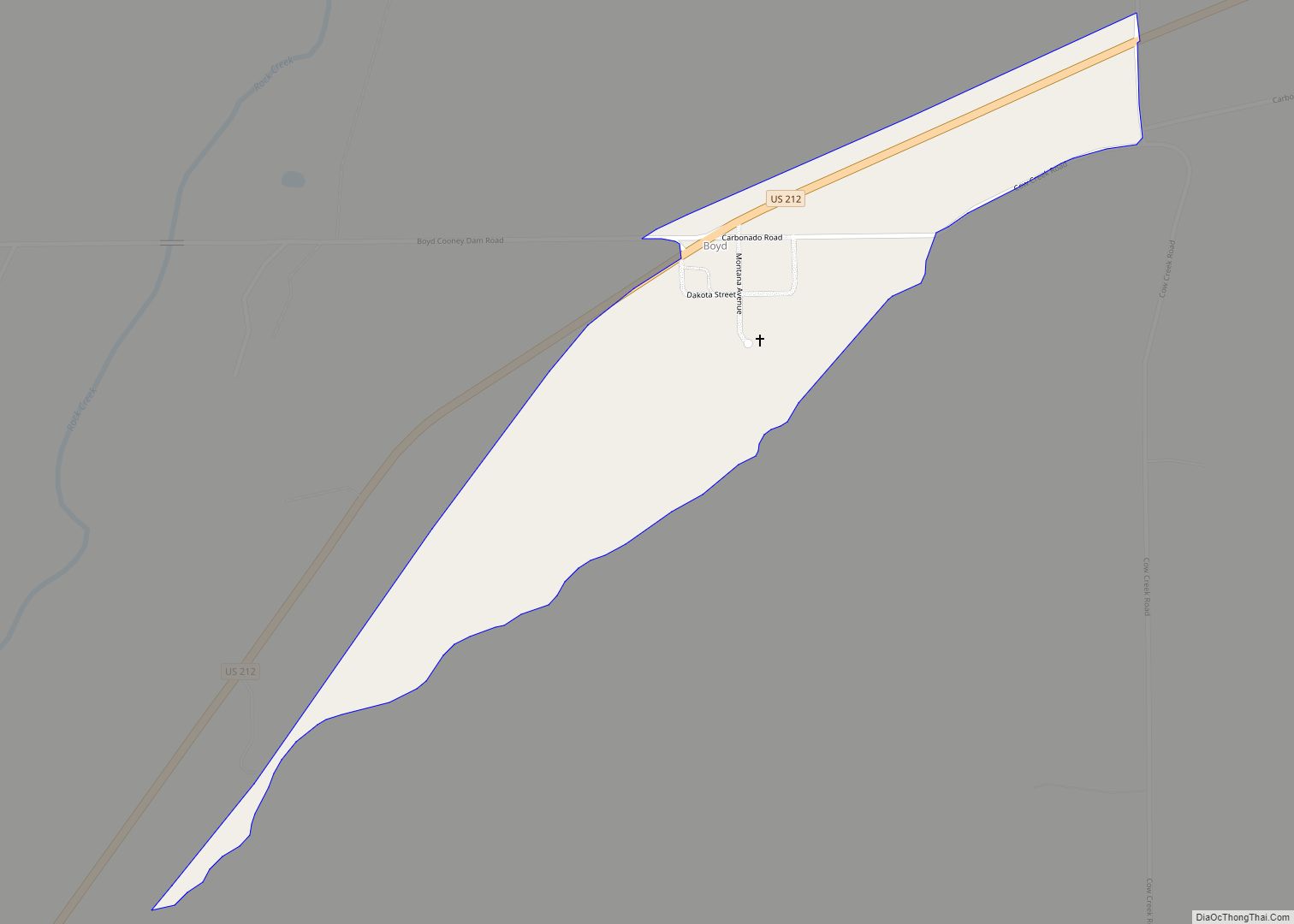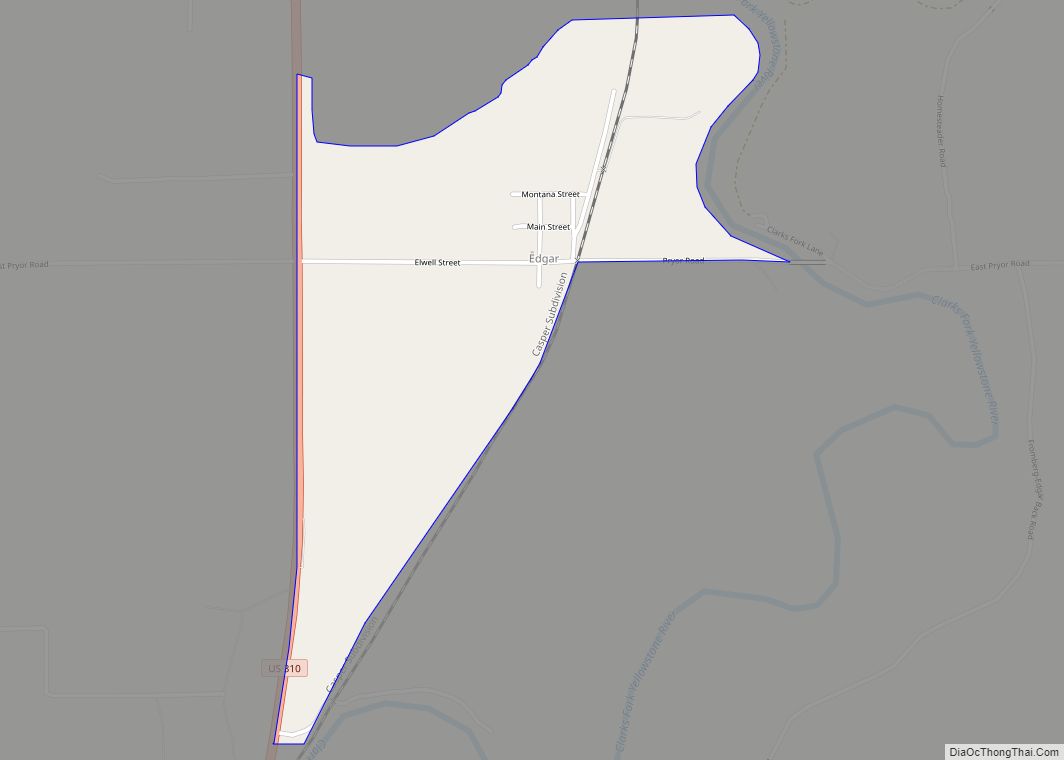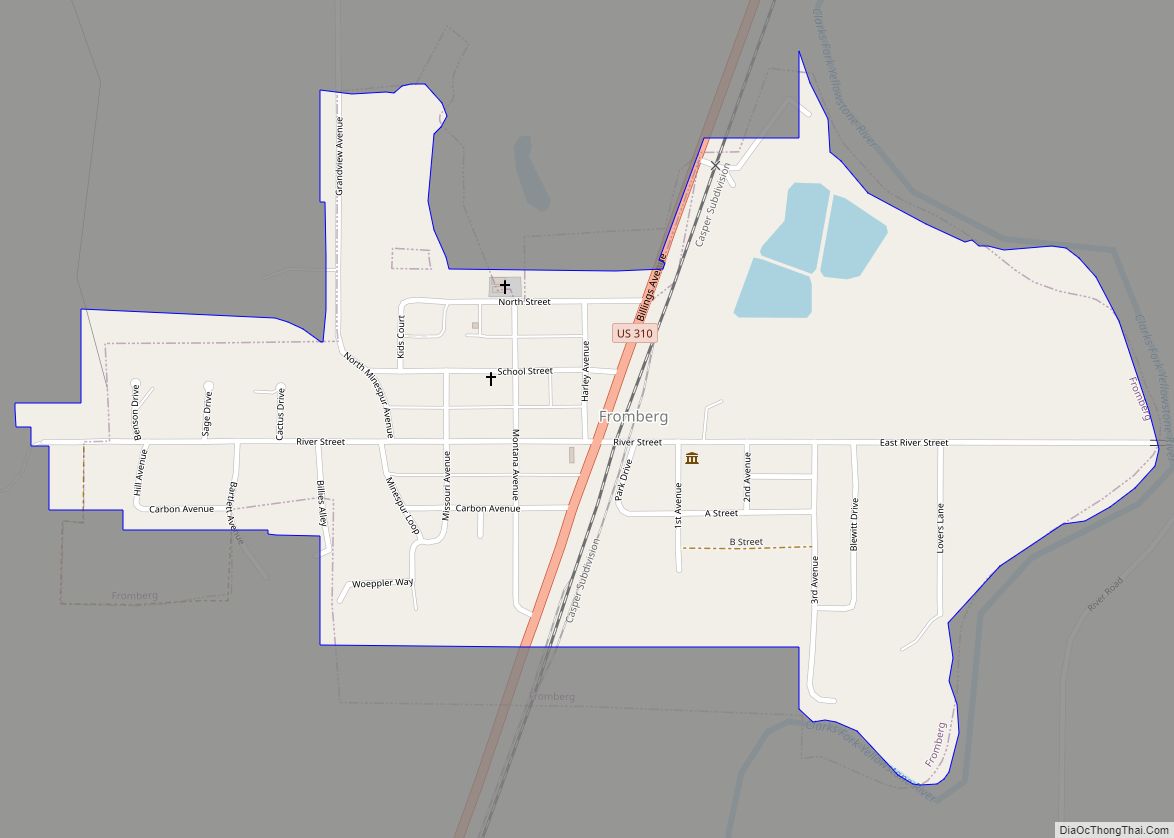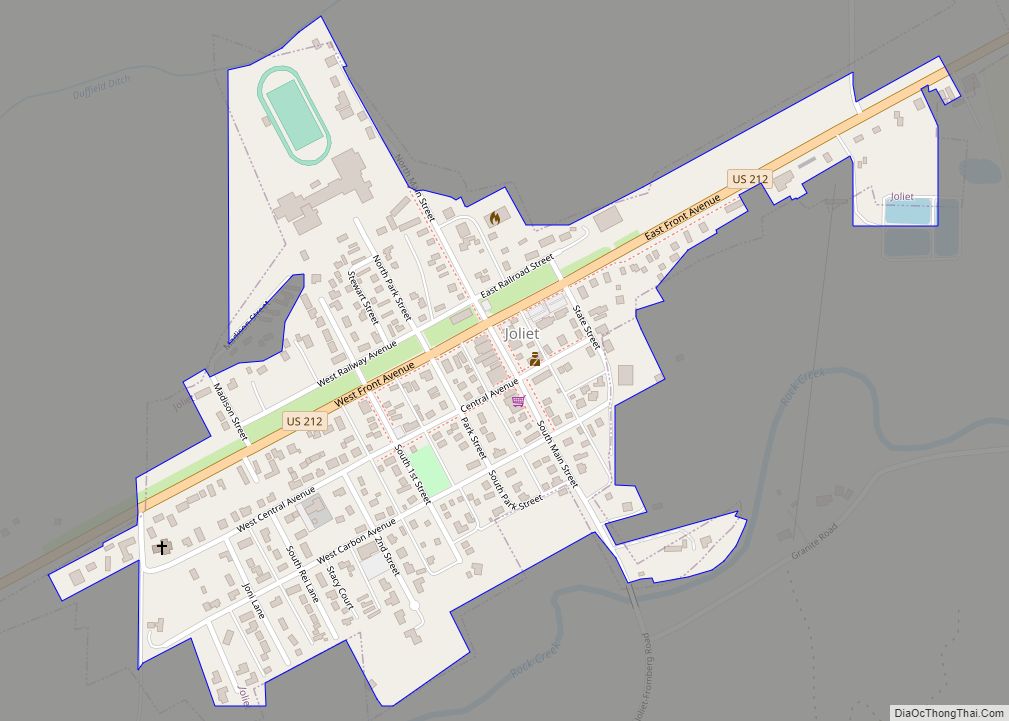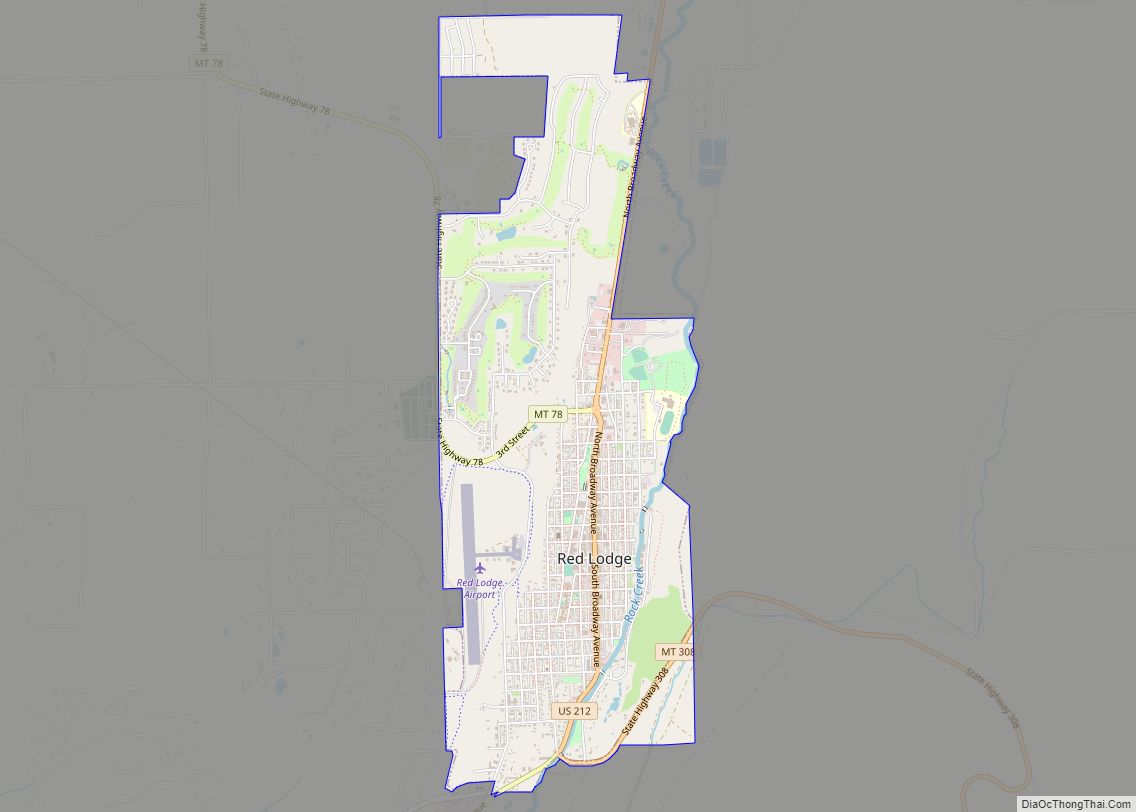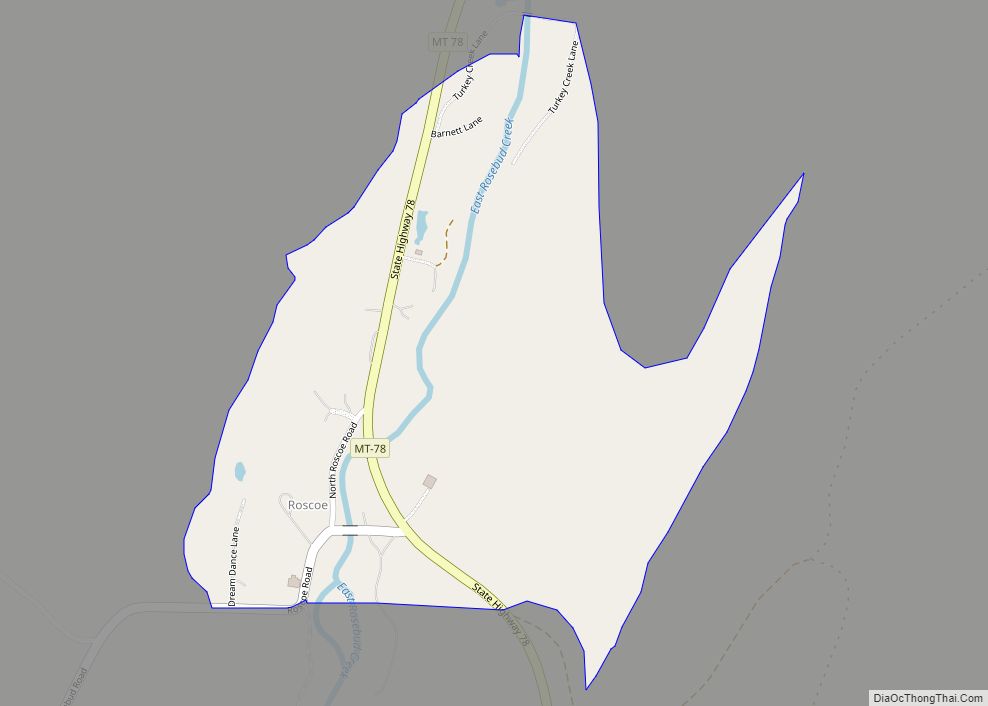Bearcreek is an incorporated town in Carbon County, Montana, United States. It is part of the Billings, Montana Metropolitan Statistical Area. The population was 91 at the 2020 census. Bearcreek uses the Mayor/Council form of government.
| Name: | Bearcreek town |
|---|---|
| LSAD Code: | 43 |
| LSAD Description: | town (suffix) |
| State: | Montana |
| County: | Carbon County |
| Elevation: | 4,557 ft (1,389 m) |
| Total Area: | 0.11 sq mi (0.30 km²) |
| Land Area: | 0.11 sq mi (0.30 km²) |
| Water Area: | 0.00 sq mi (0.00 km²) |
| Total Population: | 91 |
| Population Density: | 798.25/sq mi (307.14/km²) |
| ZIP code: | 59007 |
| Area code: | 406 |
| FIPS code: | 3004300 |
| GNISfeature ID: | 2411671 |
Online Interactive Map
Click on ![]() to view map in "full screen" mode.
to view map in "full screen" mode.
Bearcreek location map. Where is Bearcreek town?
History
Bearcreek owes its existence to area coal mining that began in the 1890s to supply coal for the Northern Pacific Railway and the Anaconda Company. The Bearcreek Post Office was established on November 22, 1905 with Sarah Criger as the town’s first postmaster. The town was platted and incorporated after the arrival of the Montana, Wyoming & Southern Railroad in 1906.
The town of Bearcreek was named for Bear Creek, which runs through the middle of town. Bearcreek came into existence due to coal mines and grew rapidly following the building of a short line railroad connecting the Bearcreek mines to the Northern Pacific Railroad in 1906. Between 1906 and 1953, the mines at Bearcreek produced large volumes of coal, which was a higher grade than other regional sources, from the extensive underground coal mining deposits. The mines were located along the creek and also in the surrounding coulees. The development of the coal mines after 1906 drew miners to the area. They came from other parts of America, and from Serbia, Montenegro, Germany, Scotland and Italy. The recent immigrants built separate ethnic-based communities in the steep coulees that run down into Bearcreek, with names like Washoe, New Caledonia, Chickentown, Scotch Coulee, International, and Stringtown. At one time in the 1920s and 1930s the population of Bearcreek combined with the other surrounding small communities was close to 3,000 persons. Bearcreek and the surrounding communities had seven mercantiles, a bank, two hotels, two billiard halls, a brickyard, numerous saloons, and Bearcreek sported concrete sidewalks and their own water system. Allegedly, the town had no churches. The economy of Bear Creek was based on coal. The Smith Mine Disaster in 1943, followed by the decline in demand for coal in the late 1940s and 1950s caused the closure of the connecting railroad in 1953 and subsequently most of the coal mines, and the population declined steadily to less than 100 persons. Many buildings in Bearcreek and the surrounding communities were moved to other towns or demolished, and only a few structures remain.
The town is home to the Bearcreek Saloon which hosts fundraising pig races throughout the year. In addition, Bearcreek plays host every autumn to Montana Falconer Symposium, the state’s largest gathering of falcon trainers and birds of prey enthusiasts.
When the legality of betting on pig races was challenged, a law was passed—Montana Code Annotated 23-5-502(b) — stating that “Only a licensee of premises that are located in an incorporated city or town with a population of less than 100 or located outside the boundaries of an incorporated city or town and that are appropriately licensed to sell alcoholic beverages for consumption on the premises under 23-5-119 may conduct a race between animals and conduct one or more sports pools on the race. The race may be conducted only if it is between pigs, gerbils, or hamsters and is conducted on the premises but outside of interior areas of the establishment where food and beverages are usually stored, prepared, or served.”
Featured in the Star Trek Television series Strange New Worlds Episode 1 of Season 1.
The Montana Wyoming and Southern Railroad
The Montana, Wyoming and Southern (or MW&S) was an independent privately owned short rail spur built in 1906 from the main Northern Pacific Railroad (NP) line at Bridger, Montana through Belfry and on to the mines in and around Bearcreek. The tremendous amounts of coal extracted from the Bearcreek mines all traveled over this 21 mile long spur. The MW&S was built by speculators hoping it could be immediately sold to the NP who used the high grade coal from the Bearcreek mines in their engines. However, since the MW&S’s single outlet to the wider world was all through the NP terminus at Bridger, the Northern Pacific did not buy this short line but sought to control it through business interactions. The MW&S was forced to operate on its own under constant financial pressure from the NP, and even though it shipped large volumes of high grade coal from Bearcreek it was often in financial and operational difficulties. The Bearcreek mine owners were in turn completely dependent on the MW&S to move their shipments. The MW&S existed as a vacillating and weak but critical link to the continued prosperity of the community of Bearcreek.
Attraction of American and foreign born workers
After the MW&S railroad was built, Bearcreek expanded rapidly as coal production increased. American and foreign-born workers moved there, drawn by the expanding coal mining activity and the promise of steady work. By 1917, the mines around Bearcreek were employing 1,200 men. As the miners came they settled in small communities built in the small steep coulees running down into Bear Creek. At its peak, Bearcreek and the surrounding communities of Washoe, New Caledonia, Chickentown, Scotch Coulee, International, and Stringtown, had a population of about 3,000 people, most of whom worked in the coal mines.
From 1906 onward, Bearcreek attracted a large contingent of Serbian/Slavic immigrants from Serbia and Montenegro. The many Serb families brought their culture and their customs to Bearcreek. With its diverse ethnic composition, Bearcreek traditionally celebrated Christmas twice, on December 25 and January 6, the Serbian Orthodox Church holiday.
Smith Mine Disaster
On February 27, 1943, the Smith Mine #3 exploded in the worst coal mining accident in the history of Montana. Of the 77 men who had gone underground at the start of the shift, only 3 survived. The bodies were all recovered. Thirty had died instantly. Forty four of the miners survived the initial blast, but were trapped underground in isolated parts of the mine, dying from initial injuries or from suffocation from methane and carbon monoxide poisoning. Some left farewell notes to their families. The Smith Mine never reopened and this disaster dealt a severe blow to the community.
Events after the Smith Mine Disaster
In the late 1940s and early 1950s, there was a marked trend away from coal consumption in the American economy, due to utilization of natural gas or fuel oil for heating and the increasing use of diesel to power locomotives. Bearcreek’s coal production went into a steady decline.
After the abrupt closure of the Smith Mine, and as the demand for coal declined so did the financial health of the Montana, Wyoming and Southern, which had always been precarious. The railroad ceased to operate in 1953. When the railroad ceased to function so did most of mining activity in and around Bearcreek, since the railroad was the only efficient way for mines to ship their coal to market. Some mines struggled on, but the last mine closed in the 1970s. After the closure of the railroad followed by most of the mines the town’s population rapidly dwindled, eventually declining to under 100 people. The rails and ties were removed from the railroad bed and over time the many empty miners houses that once filled the coulees along Bear Creek were sold and moved, or they simply sat vacant and deteriorated until they were torn down.
Today, the many surrounding communities that made up Bearceek are almost completely gone, with only a few houses marking Washoe, currently the largest of them. In the last decades there is some growth of the tiny remaining community of Bearcreek thanks to its proximity to Red Lodge which has developed an economy to serve tourists who come to ski, or to use summer cabins, or to pass through to Yellowstone Park.
Bearcreek Road Map
Bearcreek city Satellite Map
Geography
Bearcreek is located at 45°09′35″N 109°09′23″W / 45.159849°N 109.156322°W / 45.159849; -109.156322 (45.159849, -109.156322). Situated on Montana Secondary Highway 308, Bearcreek is about halfway between Red Lodge and Belfry.
According to the United States Census Bureau, the town has a total area of 0.12 square miles (0.31 km), all land.
See also
Map of Montana State and its subdivision:- Beaverhead
- Big Horn
- Blaine
- Broadwater
- Carbon
- Carter
- Cascade
- Chouteau
- Custer
- Daniels
- Dawson
- Deer Lodge
- Fallon
- Fergus
- Flathead
- Gallatin
- Garfield
- Glacier
- Golden Valley
- Granite
- Hill
- Jefferson
- Judith Basin
- Lake
- Lewis and Clark
- Liberty
- Lincoln
- Madison
- McCone
- Meagher
- Mineral
- Missoula
- Musselshell
- Park
- Petroleum
- Phillips
- Pondera
- Powder River
- Powell
- Prairie
- Ravalli
- Richland
- Roosevelt
- Rosebud
- Sanders
- Sheridan
- Silver Bow
- Stillwater
- Sweet Grass
- Teton
- Toole
- Treasure
- Valley
- Wheatland
- Wibaux
- Yellowstone
- Alabama
- Alaska
- Arizona
- Arkansas
- California
- Colorado
- Connecticut
- Delaware
- District of Columbia
- Florida
- Georgia
- Hawaii
- Idaho
- Illinois
- Indiana
- Iowa
- Kansas
- Kentucky
- Louisiana
- Maine
- Maryland
- Massachusetts
- Michigan
- Minnesota
- Mississippi
- Missouri
- Montana
- Nebraska
- Nevada
- New Hampshire
- New Jersey
- New Mexico
- New York
- North Carolina
- North Dakota
- Ohio
- Oklahoma
- Oregon
- Pennsylvania
- Rhode Island
- South Carolina
- South Dakota
- Tennessee
- Texas
- Utah
- Vermont
- Virginia
- Washington
- West Virginia
- Wisconsin
- Wyoming
